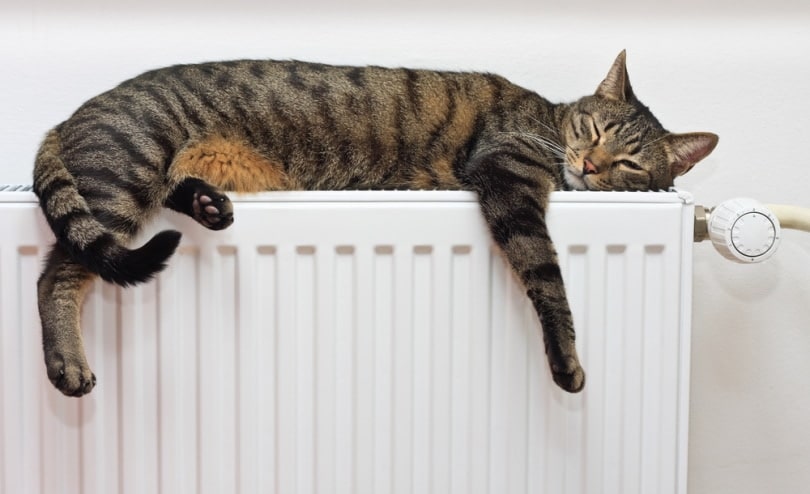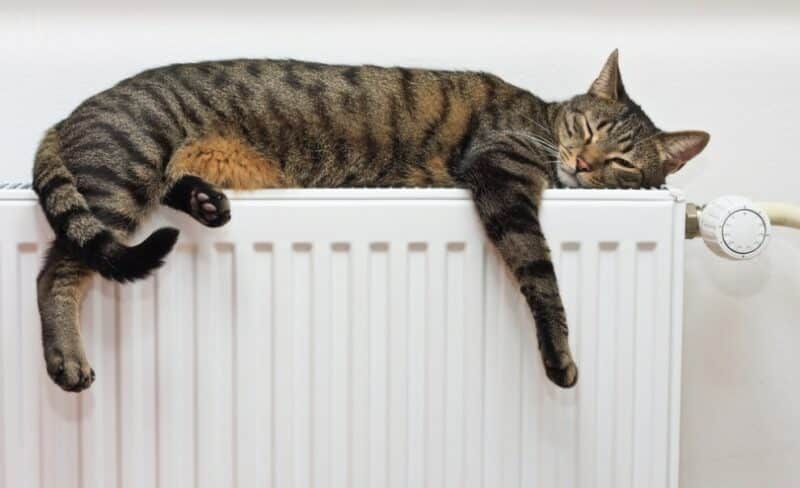Cats have a superpower: they look cute no matter what they do, but they’re especially adorable when curled up in a ball fast asleep. So, what really goes on in those fluffy heads while the kitties are taking a nap? What do felines dream about? Well, the sky’s the limit! It can include chasing prey, their favorite treats, toys, fellow furballs, or human parents. We can’t really know for sure.
Often, our dreams are about things that happened recently or in the past. Some dreams are relaxing, while others can be exciting or scary. But do cats experience them in the same way? How do you know when the four-legged bud is dozing off into the Dreamland, though? Should you be worried when the cat starts twitching? How do you keep them comfy? Time to find out!
Do Cats Have Dreams?
Did you know that most likely every mammal living on the planet has dreams in their sleep? Scientists believe that different types of dream mentation may occur during both non-REM and REM sleep, depending on the accepted definition of a dream, which means that all mammals have the potential to experience dreams.1 That’s right, and cats are no exception to that rule. When the feline is dozing off, their brain may be using that time to organize, memorize, and make sense of everything the furry bud experienced while they were awake. Thus, while the body is resting, the mind may be processing the data from that day to make sense of it.
Essentially, a dream is a stream of visions, sensations, and thoughts put together. According to MIT, animals have sophisticated dreams, during which their brains do “maintenance work” and put out slideshows for them to see2. So, yes, cats do have dreams. And, thanks to Michel Jouvet’s discoveries from the late 50s, we know that the kitty will have to be in the REM phase to have dreams. Let’s talk about that next3.
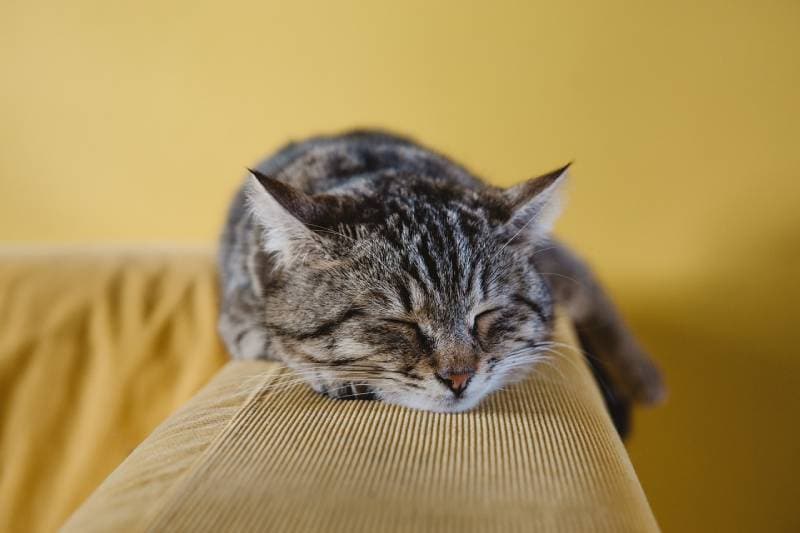
Different Sleep Phases Explained
If we break down the sleep cycles of a cat, we’ll get two phases: REM and NREM. There’s also a transitional period between these two stages. The brain does all the heavy lifting (processing and organizing memories) during NREM and only lets the feline experience the “clips” when REM kicks in. NREM makes up 70–80% of the sleepy time in humans, while REM constitutes only 20–30% 4.
As for cats, they get 3–8 hours of REM sleep per day.5 These are the average numbers, of course. Cats often take short naps that always start as NREMs but don’t necessarily transition into REM phases. Senior cats have less frequent REM sessions, particularly in comparison to kittens.

So, What Do Felines Dream About?
Unfortunately, we don’t understand cat tongue just yet, so we can’t ask our fur babies what their dreams look like. For the moment, we are left to guess. As mentioned, their brains probably process the events that took place during the day. Therefore, if the cat spent their waking hours cuddling with you, playing with a fellow feline, or chewing on delicious treats, that’s probably what they will be dreaming about later. It can be the smallest things that you didn’t even pay attention to, like new odors, images, or sounds. Do cats see dreams in color, though? Most likely, the answer is yes, but we don’t know for sure. Their dreams are also probably more like pictures rather than dreams as we experience them, but we are left to speculate.
Studies were conducted in the 1960s on the brainstem that controls and suppresses body movement during sleep. If the brainstem is removed at a certain level, this can lead to exhibition of various bodily movements that, in cats that were asleep, seemed to be associated with rage, fear, or pursuit for a minute or two. Maybe cats are dreaming about catching prey!
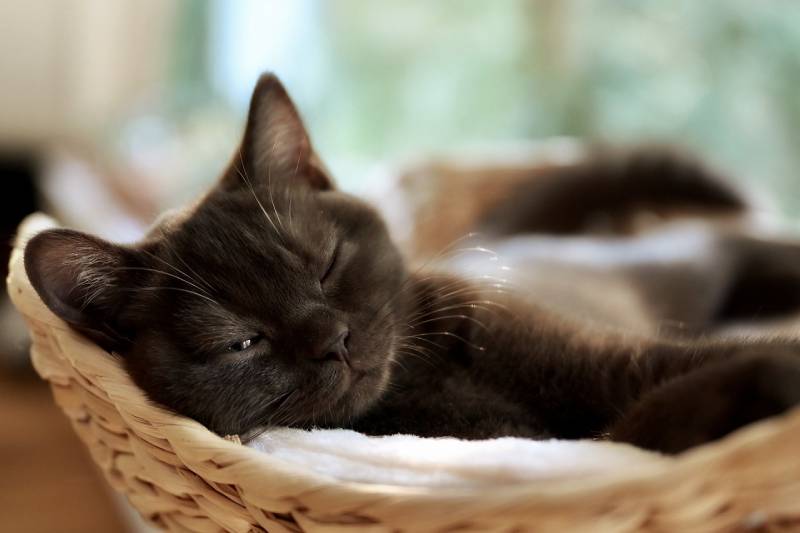
Common Signs of a Dreaming Cat: A Quick Look
Quick eye movements under the lids: that’s the most common “side effect” of REM. And that makes perfect sense since this acronym stands for rapid eye movement (NREM, in turn, means non-rapid eye movement). So, if the pet’s eyes are moving like crazy, that’s a clear indication that they’re busy dreaming. Also, have you ever noticed your furry bud twitching in their sleep
That’s another sign that the cat is drifting off into sleep. So, don’t be worried if you catch the ball of fur doing karate moves in their sleep or moving their whiskers, as that’s 100% normal behavior. Vocalization, twitching eyelids, randomly moving feet, and other strange body movements can also be present. Oh, and sometimes, kitties make cute noises when they’re dreaming.
Do Cats Have Bad Dreams?
In life, we have good days and bad days, and we also dream of happy things and sad or scary stuff. Cats may be the same way, but we cannot know if they have their fair share of uplifting and disturbing dreams. Felines mostly fear big and unfamiliar predators, loud noises, and strange things. For example, if you moved recently or if the neighbors just got a dog, that will have a big impact on the cat.
So, that may be something they will dream about. By putting together bits of information from the feline bud’s day, we may create a bigger picture that’s easy to understand. In contrast, we often have chaotic dreams that make little sense and have almost nothing to do with reality.
How Much Sleep Do Cats Need?
On average, felines need 12–16 hours of beauty sleep per day. Yes, compared to how much the average human spends in bed (which is about 7–8 hours), that’s quite a lot. That said, cats are predators by nature (yes, even domestic pets) and do a lot more running, climbing, and chasing in 24 hours than we do. Plus, every single cat is different. Injured, sick, depressed, and bored pets tend to sleep more.
Kittens snooze for up to 20 hours; adults get enough rest in 12 hours, or even less. As for older cats, they mostly spend their time on the couch taking catnaps to gather some much-needed strength. A quick note: cats are crepuscular beasts and take care of important feline business when it’s dark outside (at dawn and dusk). That means your pet stays active while you’re catching 40 winks!
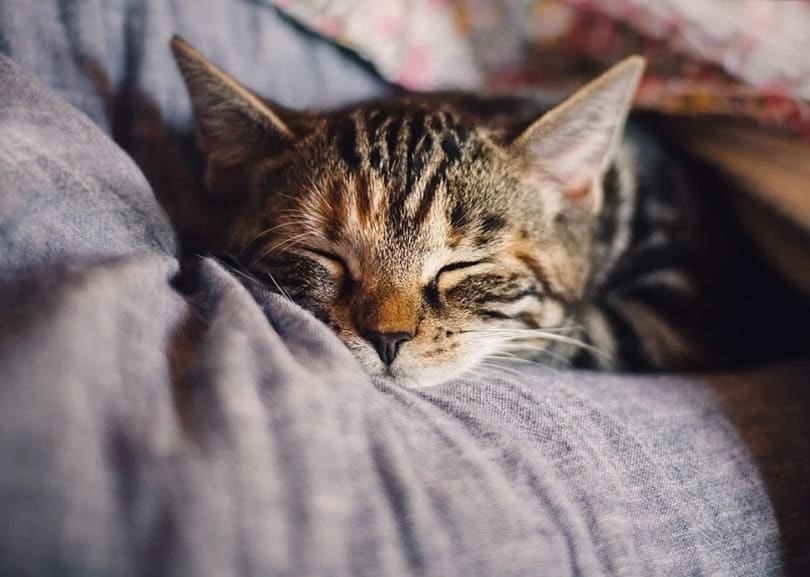
Can You Affect What the Cat Dreams About?
Yes, in some ways, we can “shape” the dreams of our beloved furry companions. As mentioned, we suspect that most cats dream about things that they do during the day. So, if you treat them with respect and kindness, show the pet affection, keep them well-fed, and keep them entertained and stimulated, that’s what the brain will be navigating through later on. Keeping the kitty safe and stress-free is another major factor.
If something’s stressing out the cat, that will have a lasting effect on their everyday life and behavior and possibly dreams as well. That’s why it’s so important to make sure the fluffy family member is healthy, relaxed, and happy. Frequent veterinary visits will help catch potential medical conditions at an early stage and treat them more effectively. So, don’t miss any of the appointments!
Making the Cat Extra Comfortable: A Quick Guide
Comfort equals less stress and more positive thoughts in the cat’s head: that’s exactly what we’re going for here. Now, it’s no secret that cats can sleep pretty much anywhere, which means having more than one bed around the house is a great idea. Also, felines are big fans of sleeping on elevated spots. First, they keep them safe; secondly, shelves, cabinet tops, and ladders serve as excellent vantage points.
Your job is to ensure the cat can easily reach those spots. Going back to the beds, put them away from the windows and heat sources. Cats like to stay warm, but they don’t fancy overly hot temps. A soft, cozy bed that feels like a hiding spot is a great pick. Lastly, do your best not to bother the cat while they’re trying to sleep, and keep the bowls, beds, and litter box separate but easily accessible.
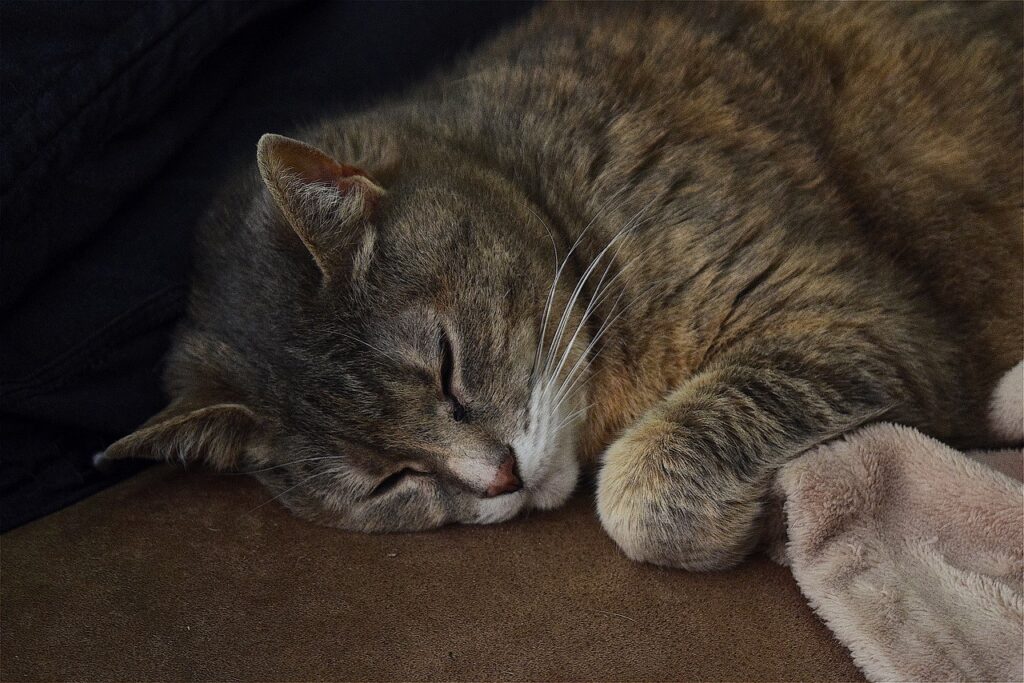
Should You Wake a Cat Up in the Middle of a Dream?
No, this is a very bad idea. If the four-legged friend is having a dream, their mind will be fully preoccupied. Thus, if you wake them up, all that’s going to do is startle the poor thing. More than that, the pet will be disoriented and a little bit scared and won’t see you as the loving, caring cat parent that you are. Instead, expect the little troublemaker to throw their fists at you.
Much like dogs, humans, or other mammals, when disturbed in their sleep, a cat will have a hard time realizing that the dream is over and you’re not a threat. So, again, don’t be surprised if the cute furry champ jumps at you with their claws and teeth, leaving scratches and bite marks all over!
Conclusion
Just like humans, cats dream about different things when they fall asleep. There’s no telling what your furry friend is experiencing at the moment, though. It can be a tasty meal, a cushy toy, an intense chase, or something else. Also, cats mostly dream when they enter the REM phase: that’s another thing we have in common.
Cats sleep for up to 15 hours per day, and, naturally, a portion of that time is spent in the Dreamland. And if you learn how to recognize the signs, you’ll be able to tell whether the pet is “watching movies” while they sleep!
Featured Image Credit: Xseon, Shutterstock

